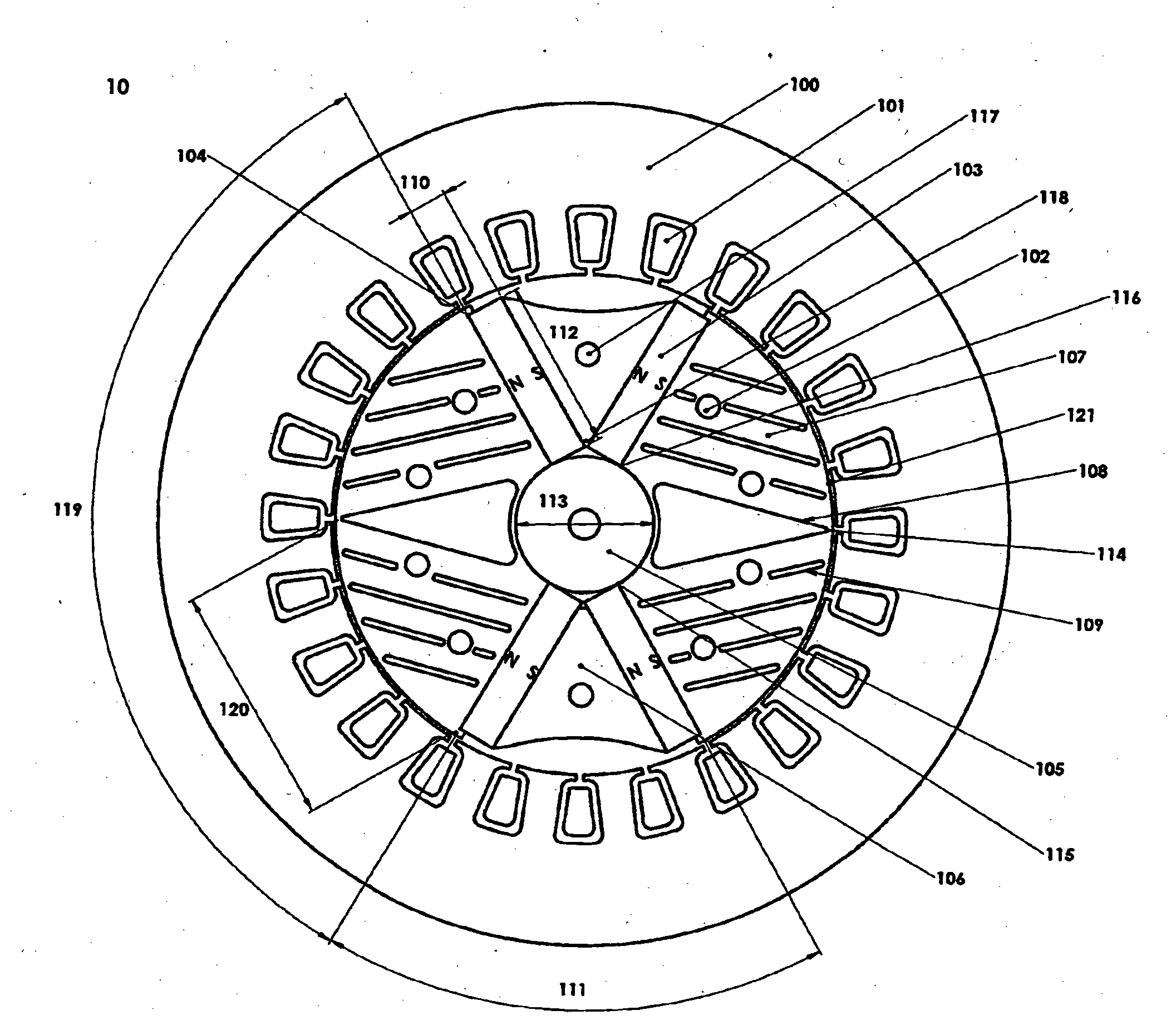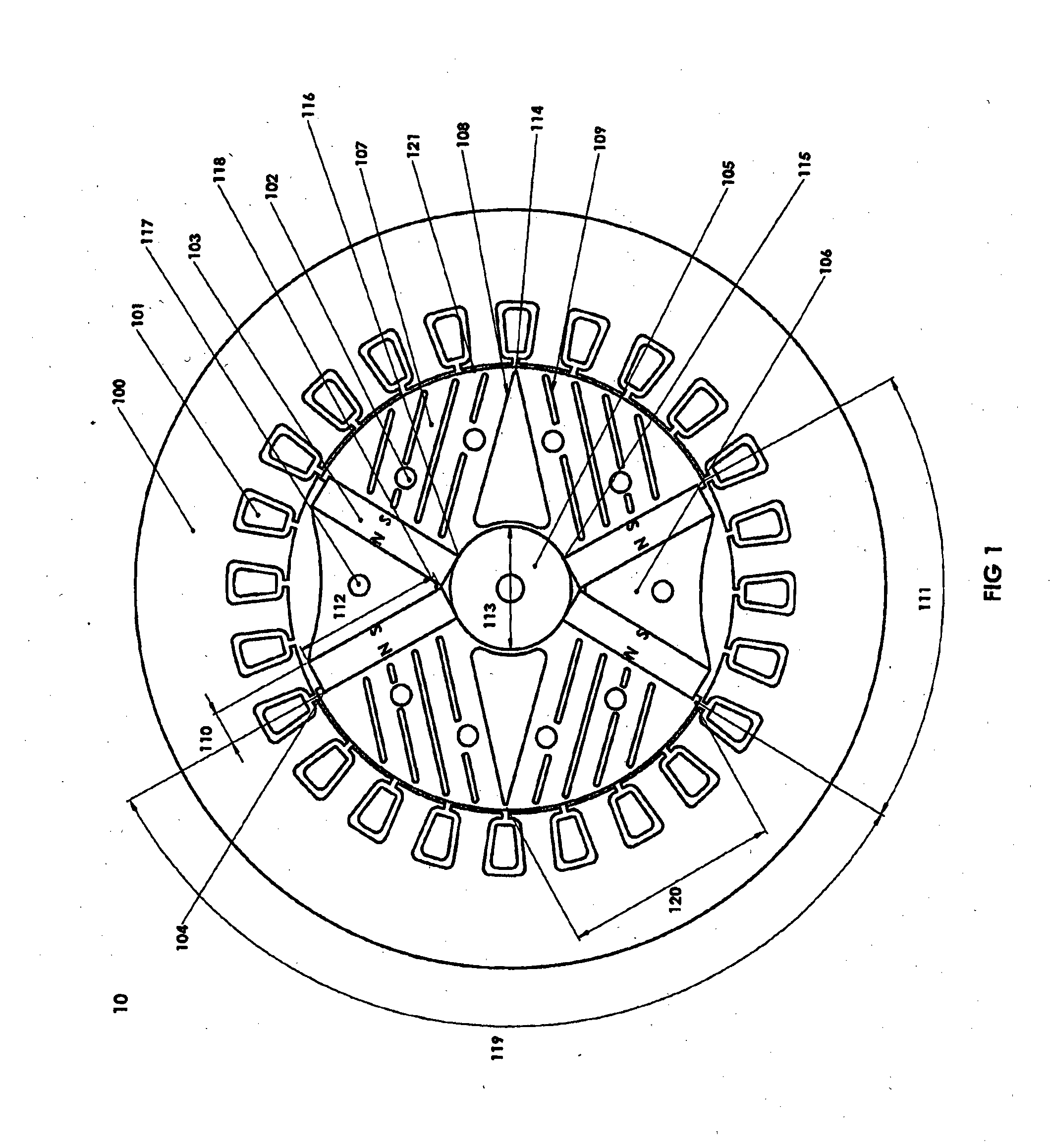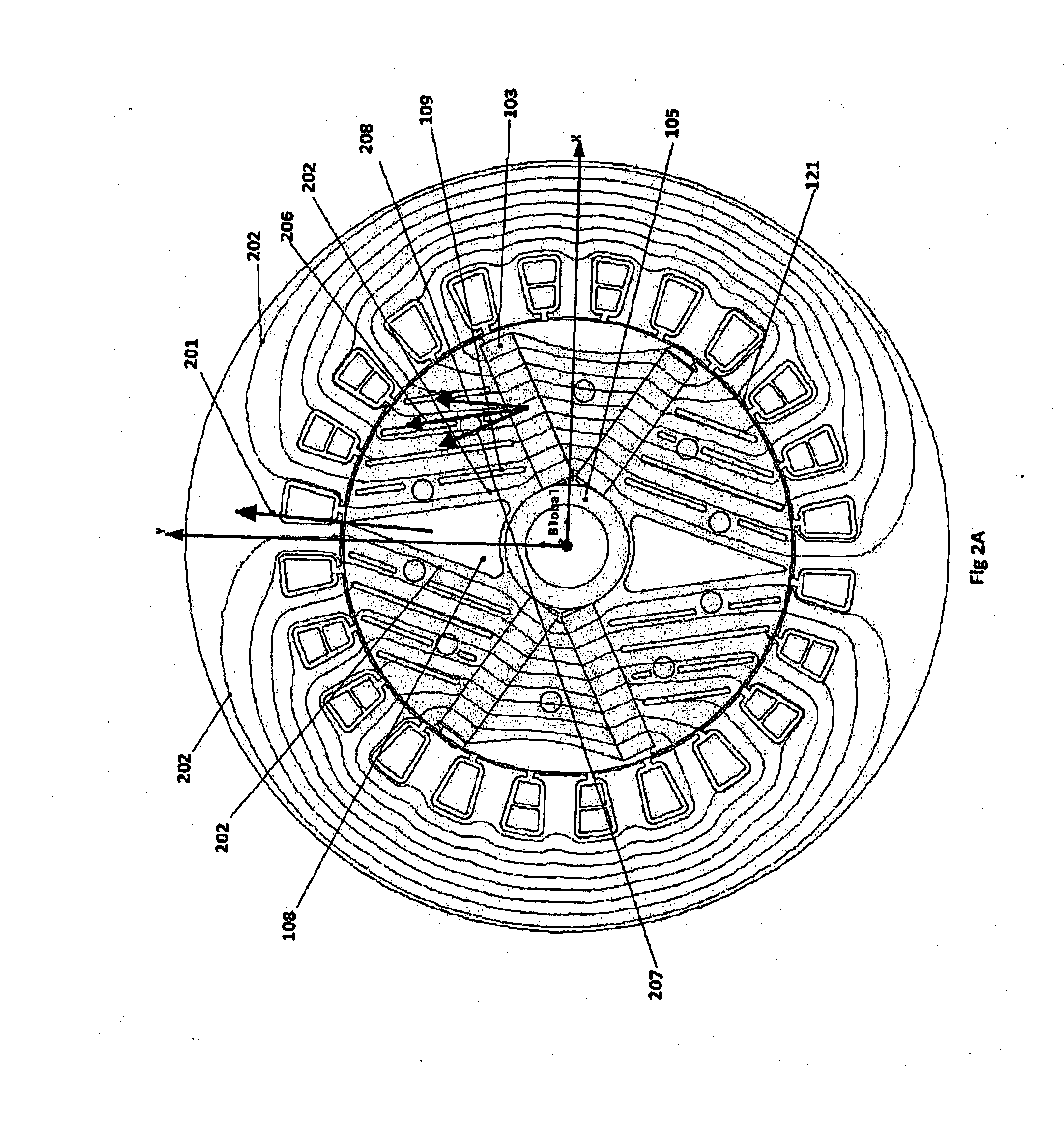Permanent magnet electrical machine
a permanent magnet and electrical machine technology, applied in the direction of dynamo-electric machines, synchronous machines with stationary armatures and rotating magnets, electrical apparatus, etc., can solve the problems of distorted voltage and current waveforms, increased cost, poor voltage regulation
- Summary
- Abstract
- Description
- Claims
- Application Information
AI Technical Summary
Benefits of technology
Problems solved by technology
Method used
Image
Examples
Embodiment Construction
[0024]In what follows, reference to “an electrical machine” (or simply “a machine”) is to be understood as applying equally to a machine configured and / or operated as a generator or motor, unless specifically indicated as being otherwise.
[0025]FIG. 1 shows, in cross-section, a 2-pole machine arrangement 10 embodying the invention. The stator 100 has windings 101 in conventional form, wound either in a single phase or three phase configuration. The rotor is formed of stacked laminations. The number of such laminations determines the power output of the machine. The laminations are clamped together by rods (not shown in FIG. 1) passing through the spaced holes 102 and 117, and secured at either end-most lamination, typically using end plates (not shown). A typical rotor diameter for a 5 to 20 kW machine is in the range 100 mm to 130 mm. The laminations include rotor pole pieces 107 located between the two magnetic poles. Each pole is formed by a pair of (embedded) permanent magnets 10...
PUM
 Login to View More
Login to View More Abstract
Description
Claims
Application Information
 Login to View More
Login to View More - R&D
- Intellectual Property
- Life Sciences
- Materials
- Tech Scout
- Unparalleled Data Quality
- Higher Quality Content
- 60% Fewer Hallucinations
Browse by: Latest US Patents, China's latest patents, Technical Efficacy Thesaurus, Application Domain, Technology Topic, Popular Technical Reports.
© 2025 PatSnap. All rights reserved.Legal|Privacy policy|Modern Slavery Act Transparency Statement|Sitemap|About US| Contact US: help@patsnap.com



